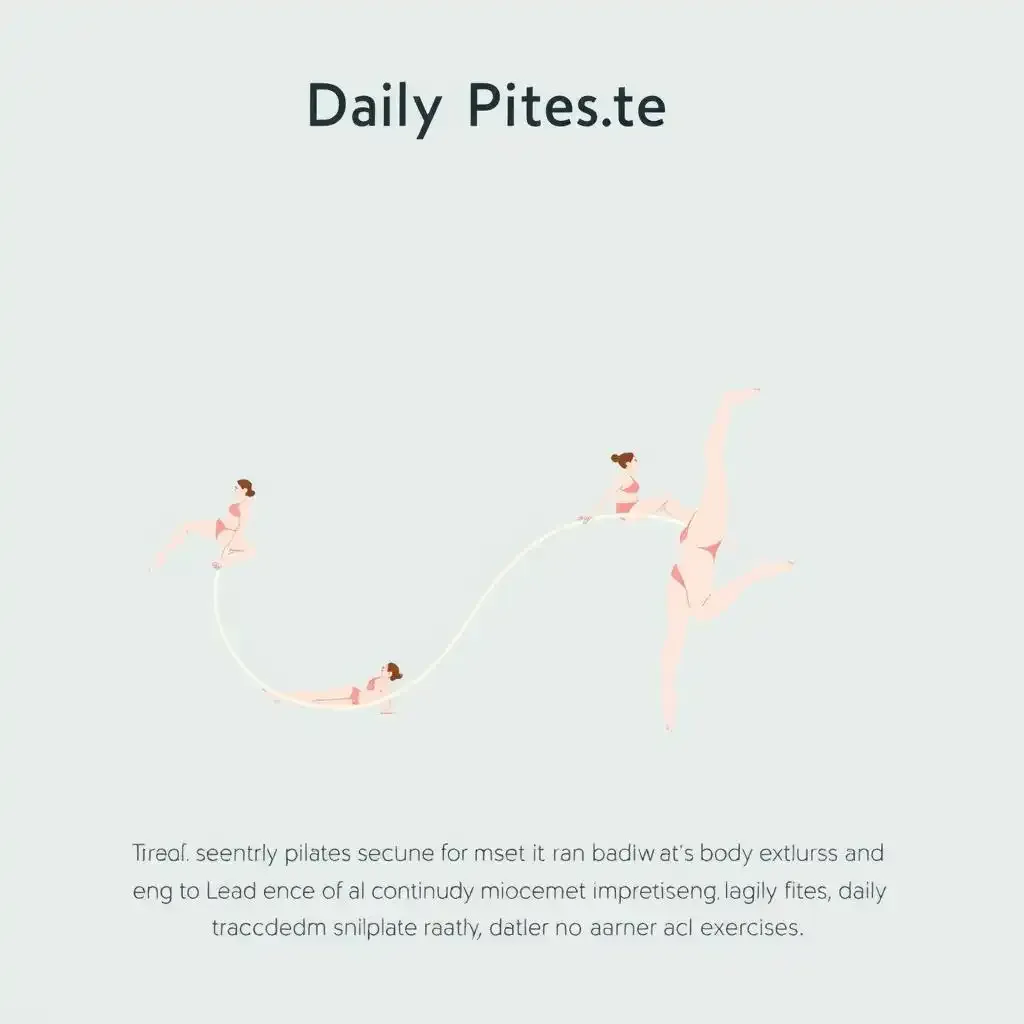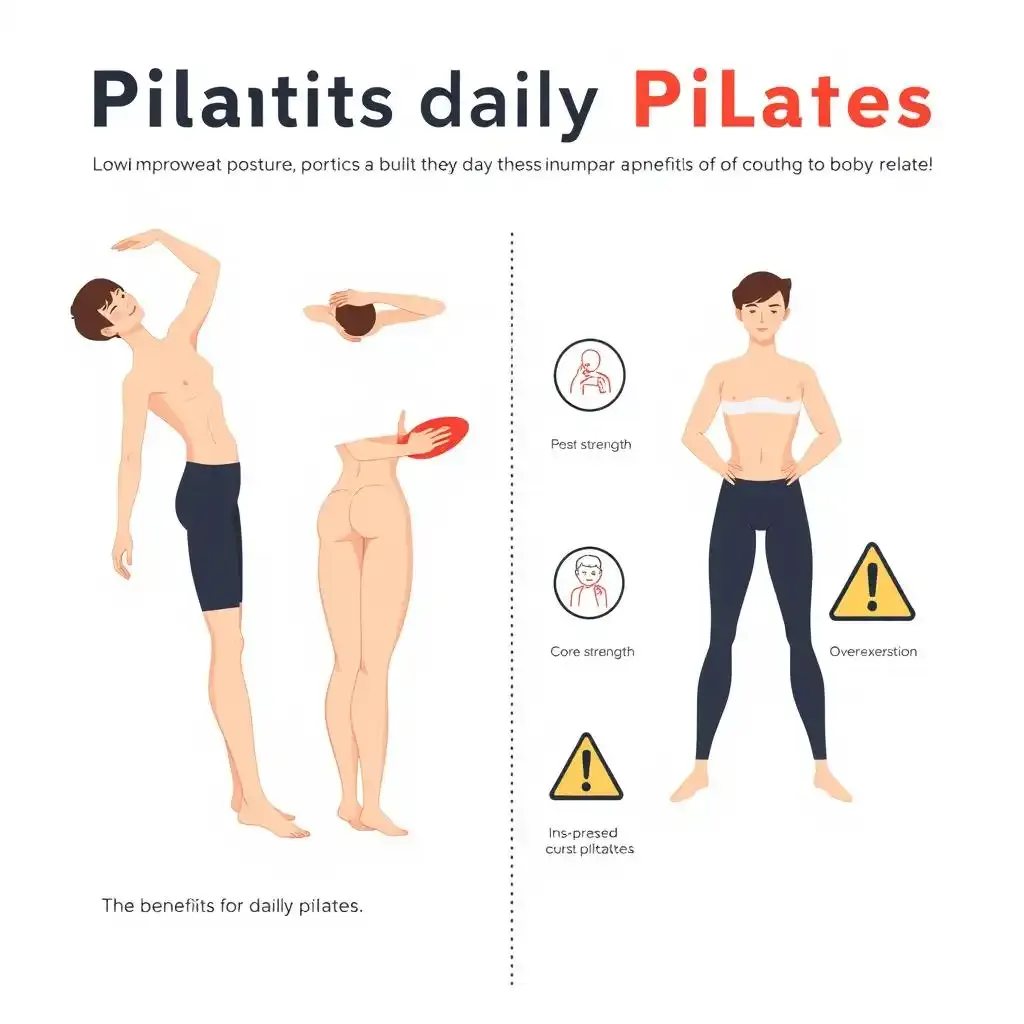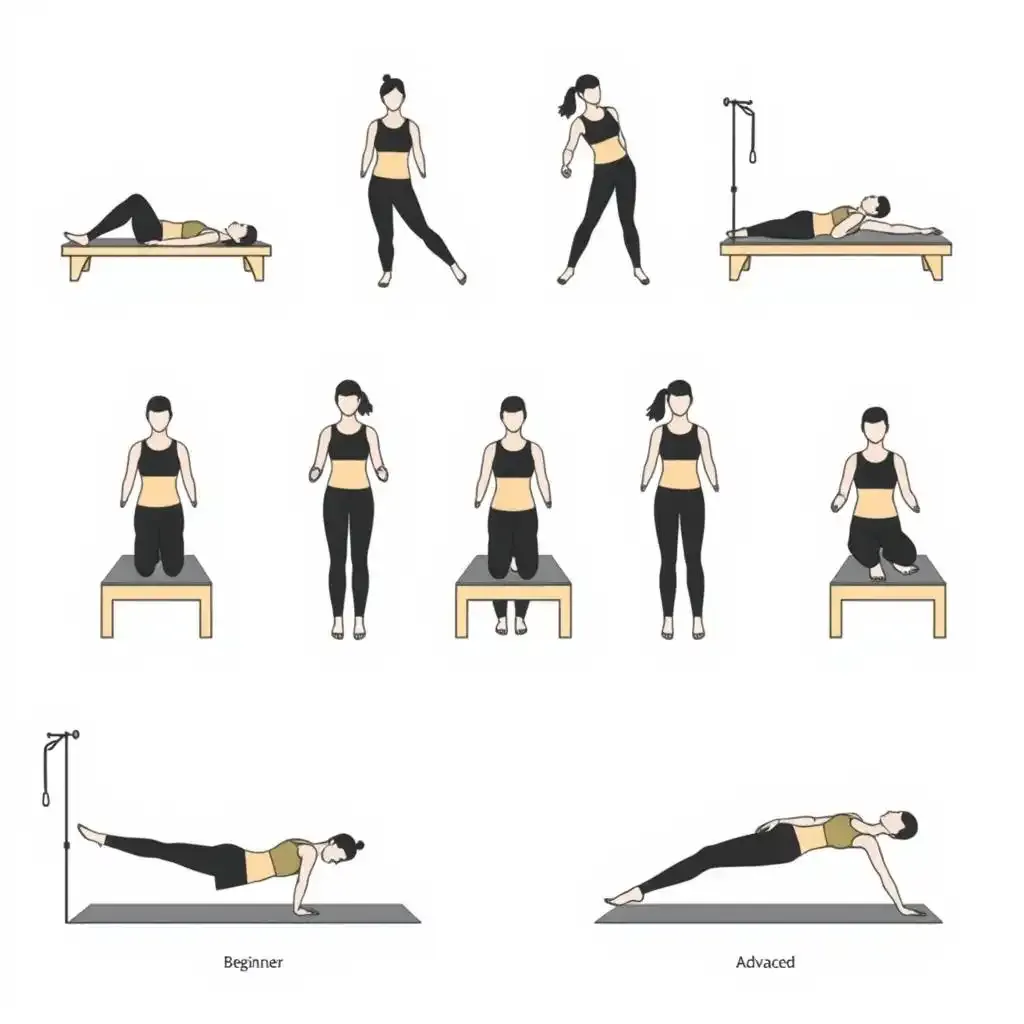Table of Contents
So, you're wondering: should Pilates be done every day? It's a question many fitness enthusiasts grapple with. The internet offers a flurry of opinions, ranging from enthusiastic endorsements of daily practice to cautious warnings about potential overtraining. At kizworld, we believe in empowering you with the knowledge to make informed decisions about your fitness progression. This article will explore the nuances of daily Pilates, examining its potential benefits and drawbacks to help you determine what works best for your body and goals. We'll look at various approaches to daily Pilates, considering different fitness levels and individual needs. Ultimately, the goal is to equip you with the tools to design a sustainable and effective Pilates routine that aligns perfectly with your lifestyle. Let’s investigate in and uncover the truth about whether you should incorporate Pilates into your daily life.
Should Pilates Be Done Everyday? The Ultimate Guide
Should Pilates Be Done Every Day? Exploring the Benefits and Risks
The Upside: Strength, Flexibility, and More!
Okay, so visualize this: you wake up, feeling amazing. You're energized, ready to conquer your day. You head to your Pilates mat, and bam! You’re already building strength, improving your balance, and boosting your mood. Pilates isn't just about getting toned; it's about creating a body that's strong, flexible, and resilient. It's like giving your body a daily tune-up – keeping everything running smoothly. I’ve noticed a huge difference in my posture since I started doing Pilates regularly. It's really helped me sit straighter and feel more confident. Plus, those core muscles? They're rock solid now! And don't even get me started on the improved flexibility. I can touch my toes with ease now, something I couldn't do before. Want to know how Pilates changed my life? Check out my post on how Pilates changed my life!
Benefit | How it helps |
|---|---|
Increased Strength | Builds muscle strength, particularly in core muscles. |
Improved Flexibility | Increases range of motion and reduces stiffness. |
Better Posture | Strengthens core muscles leading to better posture. |
The Potential Downsides: Listen to Your Body!
But, hold on a sec. Daily Pilates isn't a magic bullet. While it's generally safe, overdoing it can lead to injuries. Think of your body as a finely tuned machine – you wouldn't run it at full throttle 24/7, would you? The same goes for Pilates. You need rest days to recover and allow your muscles to rebuild. Ignoring that can lead to soreness, stiffness, and even injuries. It's all about balance. Some days you might feel like a high-intensity workout, other days a gentle stretch is all you need. Pay attention to your body's cues. Feeling tired? Take a break! Sore? Modify your routine. Remember, consistency is key, but that doesn’t mean pushing yourself beyond your limits. You might find this article helpful: Is Pilates good for you?
- Listen to your body's signals
- Rest and recovery are crucial
- Don't push through pain
Daily Pilates: A Realistic Approach for Different Fitness Levels
Beginner's Guide: Start Slow and Steady
If you're new to Pilates, ease into it. Don't try to do a full hour-long session every day from the get-go. Start with shorter, less intense sessions, maybe 15-20 minutes, a few times a week. As you get stronger and more comfortable, you can gradually increase the duration and intensity. It’s like learning to ride a bike – you don't jump on a racing bike on your first try! Consistency is your best friend here. Even short, regular sessions are better than infrequent, intense ones. Think of it as building a strong foundation. A strong foundation will support you in the long run.
Intermediate and Advanced: Variety is the Spice of Life
Once you're comfortable with the basics, you can start to increase the challenge. Incorporate more challenging exercises, use resistance bands, or try different Pilates equipment. The key here is variety. This helps to prevent boredom and keeps your muscles challenged. Think of it like this: if you only ever ate the same meal every day, you'd get bored, right? The same applies to your workout routine. Mix things up! Try different Pilates styles, incorporate some cardio, or add in some other forms of exercise. You can check out Is Pilates cardio? to learn more. This keeps your workouts engaging and ensures you're working all your muscle groups.
Should You Do Pilates Every Day? Listening to Your Body's Signals
Understanding Your Body's Cues
Your body is a wise teacher. Learn to listen to it. Are you constantly sore? That's a sign you might be overdoing it. Feeling sluggish and lacking motivation? It's okay to take a rest day. Maybe your body needs a break. Don’t ignore those subtle hints. A few rest days a week can help prevent injuries and burnout. Remember, it's a marathon, not a sprint. Sustainable progress is far more important than pushing yourself too hard too soon.
Modifying Your Routine
If you're feeling pain or discomfort during a Pilates session, don't push through it. Modify the exercise or take a break. There's no shame in taking it easy. It's better to prevent an injury than to have to take time off to recover from one. Remember, progress is not always linear. There will be days when you feel stronger and days when you need to scale back. That’s perfectly normal. If you're unsure about how to modify exercises, consider consulting a qualified Pilates instructor. They can help you tailor your routine to your specific needs and abilities. Want to know more about how Pilates can benefit you? Check out this article: How Pilates can help.
- Rest days are essential
- Modify exercises when needed
- Consult a qualified instructor for guidance
Pilates Every Day: Finding a Sustainable Routine for Long-Term Success
Creating a Balanced Approach
Daily Pilates can be part of a healthy lifestyle, but it needs to be a balanced approach. Think of it as a piece of a larger puzzle – not the whole think about. Incorporate other activities like walking, swimming, or yoga to keep things exciting and to work different muscle groups. This holistic approach not only prevents boredom but also promotes overall well-being. If you’re looking for a way to incorporate Pilates into your life while managing your weight, you might find this informative: Is Pilates good for weight loss?
Setting Realistic Goals
Don’t try to do too much too soon. Set realistic and attainable goals. Start small and gradually increase the intensity and duration of your workouts. Celebrate small victories along the way. This positive reinforcement will keep you motivated and on track. Remember, consistency is key, and small, consistent steps lead to significant results over time. This article on how Pilates transformed my body might inspire you: How Pilates changed my body.
Should Pilates Be Done Every Day? Exploring the Benefits and Risks
Daily Pilates: A Realistic Approach for Different Fitness Levels
So, you're ready to investigate into daily Pilates? Awesome! But let's be smart about it. Think of your body like a garden; you wouldn't plant a whole field of sunflowers and expect them all to thrive without tending to them individually, right? Similarly, you can't just jump into intense sessions every single day. It's all about finding the right balance. For beginners, starting slow is key. Think tiny seeds – nurture them gently. Start with shorter sessions, maybe 15-20 minutes, focusing on proper form. It's better to have a few perfect movements than tons of sloppy ones. Gradually increase the duration and difficulty as you feel stronger and more confident. Remember, consistency is way more important than intensity, especially in the beginning. Think of it as building a solid foundation – just like a house, you need a strong base before you can add more floors. Need more tips on starting a Pilates routine? Check out our guide on !
Fitness Level | Recommended Approach |
|---|---|
Beginner | Short, low-intensity sessions (15-20 minutes), 2-3 times per week. Focus on proper form. |
Intermediate | Longer sessions (30-45 minutes), 4-5 times per week. Incorporate more challenging exercises and variations. |
Advanced | Longer, intense sessions (45-60 minutes), up to 6 times per week. Use resistance bands or other equipment. Consider adding other forms of exercise for variety. |
Now, for those of you already rocking the Pilates world – the intermediate and advanced crew – it’s time to get creative! Don't get stuck in a rut. Mix it up! Think of it as a delicious buffet – you wouldn't eat the same thing every day, would you? Variety keeps things fun and challenges your muscles in new ways. Try different Pilates styles, incorporate some cardio (curious about this? Read our article on ), or add in other forms of exercise. The goal is to keep your body guessing and prevent plateaus. Remember, listening to your body is crucial. Some days you might feel like a high-intensity workout, others a gentle stretch is all you need. It's all about that sweet spot between challenge and recovery. Want to know more about how Pilates can boost your overall health? Check out .
- Vary your routine to keep things interesting.
- Listen to your body's cues.
- Prioritize consistency over intensity.
Daily Pilates: A Realistic Approach for Different Fitness Levels
Should You Do Pilates Every Day? Listening to Your Body's Signals
Understanding Your Body's Whispers
Okay, so visualize this: you're halfway through your daily Pilates routine, and suddenly, your lower back starts to twinge. Don't ignore it! That's your body screaming, "Whoa, hold your horses!" It's like your car's check engine light – a clear signal that something needs attention. Pushing through pain is a recipe for disaster – trust me, I've been there! I once tried to capability through a particularly tough session despite a nagging knee ache. The result? Weeks of sidelined Pilates and a grumpy me. Learning to listen to your body’s subtle cues is way more important than sticking rigidly to a daily schedule. Think of it as a conversation, not a command performance. It's about finding a rhythm that works for you, not against you. Sometimes, a gentle stretch or a shorter session is all your body needs. Other times, a complete rest day might be exactly what the doctor ordered. Want to know more about how to listen to your body's cues? Check out my post on It’s packed with tips!
Signal | Meaning | Response |
|---|---|---|
Muscle soreness | Your muscles are working hard and need rest. | Take a rest day or modify your routine. |
Joint pain | Something's not quite right. | Stop the exercise and consult a doctor or physical therapist. |
Fatigue | Your body needs a break. | Rest or do a lighter workout. |
The Art of Modification
So, you're feeling a little twinge, but you don't want to skip your Pilates completely. Smart move! That's where the magic of modification comes in. Think of it as a superpower – the ability to adapt your workout to your body's needs on any given day. Instead of pushing yourself into pain, simply adjust the exercise. Maybe you reduce the number of repetitions, use a lighter resistance band, or take more breaks between exercises. It’s all about finding the sweet spot where you challenge yourself without overdoing it. I find that modifying exercises helps me to maintain consistency without risking injury. And consistency, my friends, is the real key to seeing long-term results. Remember, there's no shame in scaling back; it shows you're smart enough to listen to your body. Want some inspiration on how Pilates can transform your body? Check out my post on !
- Reduce the number of repetitions
- Use lighter weights or resistance
- Take more breaks between exercises
- Modify the exercise to reduce the intensity
Pilates Every Day: Finding a Sustainable Routine for Long-Term Success
Creating a Balanced Pilates Life
Okay, so you're thinking daily Pilates – awesome! But let's be realistic. It's not just about smashing out Pilates sessions; it's about weaving it into your life like a comfy, supportive thread in a beautiful mix. Think of it like this: If you only ate broccoli every day, you'd probably get a little tired of it, right? Variety is the spice of life, and the same goes for your fitness routine. Mix up your workouts! Maybe one day it's a Pilates session, the next it's a brisk walk, and the following day you hit the pool. This prevents boredom and helps you work different muscle groups. And hey, if you're curious about how Pilates can help with weight loss, check out my post on – it might surprise you! Remember, a balanced approach is way more sustainable than intense, one-track-mind exercise.
Activity | Benefits |
|---|---|
Pilates | Strength, flexibility, core stability |
Walking | Cardiovascular health, stress relief |
Swimming | Low-impact cardio, full-body workout |
Setting Realistic Goals (and Sticking To Them!)
Let's talk goals. Don't aim for the moon on day one. Start small, set achievable goals, and gradually increase the intensity and duration of your workouts. Think of it like building a LEGO castle – you wouldn't try to build the whole thing at once, would you? You start with the base, then add walls, then towers. Celebrate every milestone! Did you manage a 20-minute session without collapsing? High five! Small wins fuel motivation. And remember, consistency is king. Small, regular sessions are far more effective than infrequent, intense ones. Want to see how Pilates totally transformed my body? Check out my experience on – it’s pretty amazing!
- Start with short sessions.
- Gradually increase intensity and duration.
- Celebrate small victories!
- Consistency is key.
Pilates Every Day: Finding a Sustainable Routine for Long-Term Success
Final Thought
Ultimately, the question of whether you should do Pilates every day is a personal one. There's no one-size-fits-all answer. Listen to your body, respect your limits, and prioritize consistency over intensity. A sustainable Pilates routine, adapted to your individual needs and fitness level, is far more beneficial in the long run than a strenuous, unsustainable daily regimen. Remember, the key is finding a balance that allows you to reap the rewards of Pilates without risking injury or burnout. So, find your rhythm, embrace the practice, and enjoy the process towards a stronger, more flexible you!